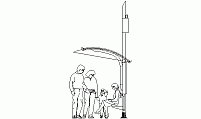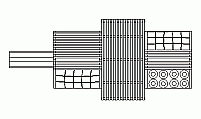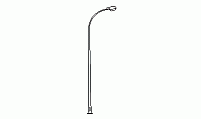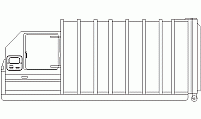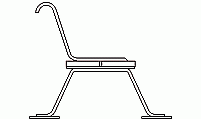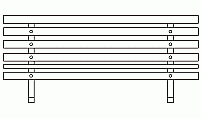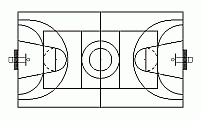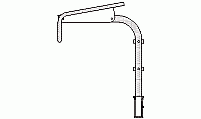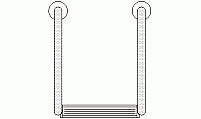CAD Blocks categories
 3D models
3D models home furniture
home furniture sanitary ware - bathrooms
sanitary ware - bathrooms professional equipment
professional equipment doors and windows
doors and windows people and animals
people and animals plants and trees
plants and trees vehicles - transports
vehicles - transports architectural details
architectural details mechanical - electrical
mechanical - electrical urban planning - civil works
urban planning - civil works safety health construction
safety health construction accessible design
accessible design drawing sheet
drawing sheet signals
signals construction machinery
construction machinery accessories and objects
accessories and objects maps and street maps
maps and street maps
Urban Bench CAD Block for Plan View

size: 5 kb
category: street furniture
related categories:
description: Top-down view of a modular urban bench with four connected seats, suitable for bus shelters, parks, or public waiting areas
file extension: .dwg CAD - AutoCAD software
Versatile Public Bench CAD Design for Architecture
Detailed Design of Urban Bench Seats
The urban bench consists of four connected seats with a curved, ergonomic design viewed from the top. The connecting elements maintain proper spacing and structural integrity, ideal for modular installations. The material is typically lightweight yet durable, like aluminum or steel, ensuring long-lasting performance in outdoor and indoor environments.
Alternative designs include benches with varied seat arrangements, such as individual, two-seat, or six-seat options, with armrests or backrests. These variants cater to different public needs, such as high-traffic waiting areas or aesthetic public park spaces.
Standard Dimensions of Public Benches
The common dimensions for urban bench seating are 18 inches (0.46 meters) in height and 72 inches (1.83 meters) in length, providing comfortable seating for four individuals. Each seat is typically 20 inches (0.51 meters) wide, ensuring adequate personal space in public settings.
In this CAD block, the layout adheres to a width of approximately 80 inches (2.03 meters) when factoring the connecting elements. This standard ensures that the design can fit within typical bus shelter configurations or other public seating areas.
Construction and Installation Insights
- What materials are commonly used for these benches?
- Urban benches typically use materials like aluminum, stainless steel, or treated wood for durability and weather resistance.
- How are these benches installed?
- Benches are anchored to the ground using bolts or embedded supports to prevent displacement and ensure safety.
- What is the weight capacity of these benches?
- Each seat can support up to 250 pounds (113 kg), accommodating diverse user needs in public spaces.
- Can these benches be customized?
- Yes, finishes, colors, and backrests can be added for specific aesthetic or functional requirements.
- Are these benches ADA-compliant?
- Variants with armrests and appropriate seat heights can be designed to comply with ADA guidelines for accessibility.
Advantages of Modular Bench Design
Modular bench designs are incredibly versatile, allowing architects to optimize seating arrangements for various public spaces. Their compact and ergonomic layouts provide efficient use of space while maintaining user comfort. Additionally, they are highly durable and require minimal maintenance.
Compared to traditional park benches, modular urban benches are lightweight, easier to transport, and more adaptable for public waiting areas, such as bus stops or train stations. Their design supports a modern aesthetic, blending seamlessly into urban environments.
Evolution of Public Bench Design
The origins of public benches date back to ancient civilizations where stone seating was integrated into communal spaces. Over time, materials like wood and metal became prevalent, enabling the creation of lightweight, movable benches suitable for urbanization needs.
Globally, equivalent systems include park benches in Europe, bamboo seating in Asia, and recycled plastic designs in eco-conscious communities. These variations reflect regional preferences while maintaining the universal function of public seating.



